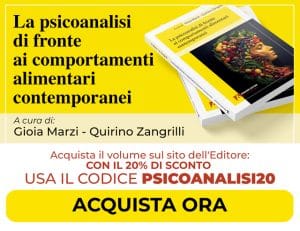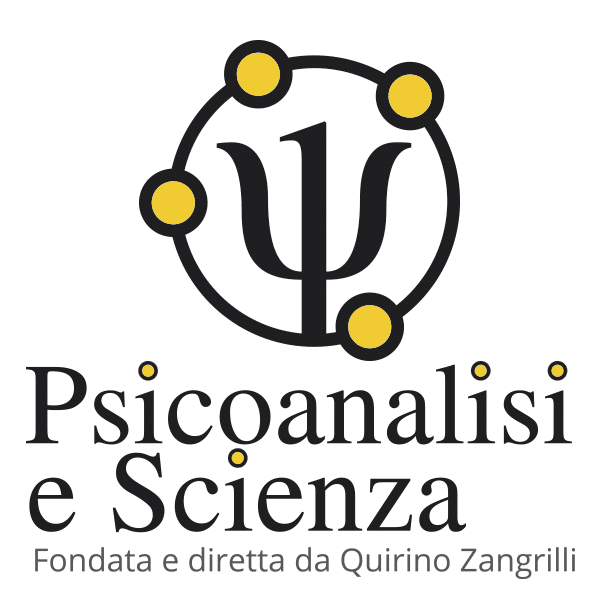Nightmares and Dreams
The present work appeared in issue 10 of the “Bollettino dell’ Istituto Italiano di Micropsicoanalisi”, first semester, 1991
The attentive reader who follows the scientific edition appearing in the present review will surely have noticed the repeated attempt of the redefinition in micropsychoanalytic terms of the concept of ‘Dream’ developed by various authors of the International Society of Micropsychoanalysis (Fanti, Peluffo, Bolmida, Zangrilli) and will have understood that the oneiric process is considered in a substantially different way in respect to the traditional psychoanalytical literature.
If we pay particular attention to the technique of the analysis of dreams which is usually used in micropsychoanalysis it is clear that what one tries to obtain is the loosening and the rupture of the existing ties between oneiric elements in order that mental representations and affects caged by the network of the oneiric subject, emerge. 1
A notable difference between different subjects exists in performing such an analytic study and sometimes we find ourselves in front of subjects who show a great resistance to adapting to the micropsychoanalyst’s indications.
This evidence can allow us to precociously deduce a diagnostic and prognostic indication which integrates the opinion that we had already made of the case.
Such a resistance, in fact, is an important indication of the intensity of the taboo (attraction-repulsion) which the subject manifests towards the constitutive Void and consequentially of the rigidity of his character armour. Here are the associations of a young patient: “The dream is a thing which keeps things together; moving away from the dream, this wandering without being attached to anything, I have always tried to avoid it. Empty areas, which I try with all of myself not to see, would remain”. Such resistance can assume various forms: There are people who manifest it with an oneiric hypermnesia, radiantly bringing a dream per session, obviously in love with their last nocturnal creation: the unconscious goal is that of never delving into the study of any one dream to preserve it substantially integral.
Such defences are sometimes so strong that they make us believe that they are not totally acquired, but embedded in the same psychic mechanism and finalised in impeding the effective disorganisation of the dream.
Obviously, we may ask why and the answer can only be that the dream maintains our form.
Since the dream is the place of privileged manifestation of the Image and the meeting ground between the phylogenetic information and the ontogenetic vehicle, it is probably through the oneiric process that the energetic coordination of the human being (in other terms, his form) is incessantly renewed, in the same way in which it manifested itself during the succession of infinite attempts which have repeated themselves during the course of generations.
And it is during dreams that, more easily in respect to the other two cardinal activities (sexuality and aggressivity), the exigency of maintaining the homeostatic equilibrium can be more efficaciously satisfied. In other terms, perhaps a little more unsettling, the Image is the set of representations and affects experimented through the course of the generations that have preceded us; it gives us some requests for satisfaction which, in the oneiric dramatisation that has a purely defensive function, can assume any form but in its essence is an allure, a request of returning to the place from which we came: the Void. It is the souls of the dead who call us, Virgil would say. Fortunately for us, the Return can assume the less definitive aspect of the Continuity: the Image requires us to conform to models of energetic organisation, which during the course of the phylogenesis, have demonstrated themselves to be more suitable for maintaining the psychosomatic equilibrium.
It so happens that certain psychic, somatic and behavioural answers with the passing of centuries, can result no longer necessary or even be counterproductive for the ontogenetic vehicle.
Nevertheless, the Image perseveres in its request for continuity and it is the Dream that, recruiting from its experiential archive of representations and affects, takes charge of satisfying the requests, above all when the relative attempts of satisfaction through the person’s life do not have success because they are obstructed by the situation. These preliminary remarks are necessary to introduce a hypothesis of interpretation of the nightmare phenomenon and its etiological differentiation from the anxiety dream. A view at the table elaborated by Kramer 2 allows us to draw some interesting observations.
Above all the phase of manifestation: whilst the nightmare verifies itself in the NREM phase (states II and IV) the anxiety dream manifests itself in the REM phase when the paradox occurs for which, while the motoneurons and the pyramidal and extrapyramidal tracts are in an excitement state, the spinal motoneurons are inhibited and therefore the peripheral discharges are blocked. Regarding the reaction of the subject, usually in the case of nightmares the awakening is immediate and spontaneous with the sensation of fear, sweating, tachycardia and tachypnea.
In the nightmare, the amnesia of the representational-affective content of the oneiric process is often present, while in the anxiety dream it is usually absent. To such data we can add the following considerations: we have observed that the manifestation period of the nightmare is associated to the NREM phase (slow wave sleep period) in which an intense anabolic activity occurs, in other terms synthesis of macromolecules such as the RNA and proteins. It is increased after physical fatigue. On the contrary, the REM sleep is increased after psychic fatigue: new experiences, new data to memorise, necessity of adjusting to new situational stimuli. From this point of view the NREM sleep would seem to have a conservative function (continuity) and the REM one an innovative function (discontinuity). Let’s also consider the concept of the oneiric continuum according to which the human being is characterised by an incessant cellular oneiric activity regardless of the psychic state in which he finds himself (wake, sleep or dream). The human being is incessantly subjected to the demands by the Image finalised to the safeguarding of the psychosomatic balance that are re-actualised by the dream, followed by attempts of dreaming-off which use the aggressivity and the sexuality in the wake state to realise themselves. 3
The REM phases are also characterised by an intense activity of the cerebral cortex and could correspond to the assembling and reorganising activity of the raw representational-affective material resulting from the drive activity reflected in the Id during the NREM phases. This point of view should be considered partial: it should be said that in the background of the incessant activity specific to the oneiric continuum, during the sleep phases there are periods characterised by an inhibition of the motility, known as NREM periods from a neurological point of view, which periodically lead to phases characterised by an intense cortical activity denominated REM.
The random reactivation of representations and affects would create requests of satisfaction for the individual with an increasing tensional accumulation. The tensional increase would tend to the enactment of the behavioural schemes which have revealed to be more appropriate during the course of the phylogenetic evolution for the maintenance of the psychosomatic balance. In the wake state the human being uses the motor skill to achieve such desires with sexual or aggressive modality. It is in the sleep phase that the REM phase self-engages with the muscular atony which characterises it: in this way the dreaming-out 4 would be avoided and the response to the desire would be given in an hallucinatory way. With the activation of the cortical functions the dream plot is woven and the oneiric vicissitude is fed to the Image that can, in this way, satisfy its exigences of continuity. A patient: “At night no one used to check-up on me or look after me; who knows where I used to end up… who knows what terrible things happen. I could go into my parents’ room and suffocate them. I do it every night. During the night no one stops me… I can go in my brothers’ room and suffocate them!”. I believe that during the course of the evolution, the necessity for the nervous structures to rest, has lead to the advantageous situation for which, through the regular chronobiological alternation of the various sleep states, the different cellular compartments can lower their level of activity without compromising the global homeostatic function of the entire organism. So, during the deepest stage of the slow-wave sleep (NREM) the transmission of reticular signals to the cortex is greatly decreased or even absent while the REM sleep is defined paradoxical also because some cortical areas are well activated notwithstanding the subject is sleeping (this kind of sleep is the result of a curious mix of the activation of some cerebral regions with concomitant subcortical inhibition).
Nevertheless, the activity of the Image is incessant, as are its requests which nurture the desires of the individual. And, if the requests of the Image are incessant, different is the situation that such requests will find in the individual depending on whether he is in the wake state, the NREM sleep or the REM sleep. In the wake state a subject with an activated cortex and subcortical centres equally activated (in other words an organism ready for activity guided by the cortex); in the REM sleep state a subject with numerous cortical regions activated but with muscular atony (subcortical inhibition: in other words, an organism predisposed to an hallucinatory activity); in the NREM sleep state a subject in peripheral rest with a cortical activity which receives few impulses from the activating reticular system from which it has released itself and has become autonomous (in other words, a defenceless subject to whom the motor action and the hallucinatory elaboration are denied: regarding this point see the interesting considerations by N. Peluffo regarding the subjects in which both the movement and the regular sleep-dream activity are impeded).5
I believe that this simple consideration is sufficient to explain the reason for the systematic insurgence of nightmares during the slow wave sleep stage: the nightmare is in relation to a brusque contact with the constitutive Void, contact which is amplified and dramatised by the minor possibility of superior integration in respect to the dispersiveness-disintegration of the NREM stage, with the acting-out of a defence mechanism of the “all or nothing” kind, massive activation of the iconic screen and its successive anthropomorphisation during the awakening phase. If I can use a picturesque comparison: in an oceanic situation of contact with the universal Void the Image rises with all its force and demands satisfaction, the human being who is disconnected and atonic during the NREM phase is not able to recruit the images to build a hallucinatory representation which calms the exigences of the Image, which in turn, floods or engulfs the sleeper. In the impossibility of accessing the REM phase the awakening caused by the nightmare is an attempt of escaping the will of the Image to abreact, firstly with the imposing neurovegetative manifestations and secondly with the action, the tensional surcharge.
I would like to underline that Lopez in 1980 had already interpreted the nightmare as an empty dream 6 ; I can only add a little specification: the nightmare is the principal manifestation of the Void taboo (attraction-repulsion)
NOTE:
1 – Peluffo N. • Relazione tra sogno e creatività • Bollettino dell’Istituto Italiano di Micropsicoanalisi n° 9, 1991.
2 – Kramer M. • Dream Disturbances • Psychiatr.Ann. 9,50-68,1979.
3 – Peluffo N. • Relazione tra sogno e creatività • Bollettino dell’Istituto Italiano di Micropsicoanalisi n° 9, 1991.
4 – Fanti S. • La Micropsicoanalisi • Borla Editore, 1983.
5 – Peluffo N. • Relazione tra sogno e creatività • Bollettino dell’Istituto Italiano di Micropsicoanalisi n° 9, 1991.
– Lopez D. • Dalla relazione analitica come sogno alla relazione tra persone • Gli Argonauti, 4, 1980.
E’ autore di 74 tra libri e pubblicazioni scientifiche. Ha partecipato in qualità di relatore o di presidente di sessione a numerosi Convegni scientifici nazionali ed internazionali.
Il suo libro “La vita: involucro vuoto”, pubblicato da Borla nel 1993, è in adozione dal 1994 presso la Cattedra di Psicologia Dinamica dell’Università di Torino.
Nel 1994 gli viene assegnato il “Premio Nazionale Ciociaria per la Medicina”.
E’ l’ideatore e fondatore della rivista multimediale “Psicoanalisi e Scienza”, la più seguita rivista di psicoanalisi on line al mondo in lingua italiana (Fonte: Entireweb, Alexa, Google, Virgilio, Arianna., etc.). Nel 2012 partecipa come Relatore alla Rassegna Scientifica di BergamoScienza.
Nel 2013 espone i suoi studi sull’nterazione materno-fetale nella Sessione Speciale dell’ XI Congresso Mondiale di Medicina Perinatale a Mosca con la relazione “Intrauterine Imprinting”.
Nel 2024 riceve il Premio Accademico d’Onore della Accademia Culturale Internazionale Cartagine 2.0.
Nel 2024 docente ad Almaty – Kazakhstan presso il workshop di psicoanalisi sul tema della violenza, promosso dall’Università di psicoanalisi di Mosca in collaborazione con l’Istituto svizzero di micropsicoanalisi.
Nel 2025 pubblica come curatore il libro “LA PSICOANALISI DI FRONTE AI COMPORTAMENTI ALIMENTARI CONTEMPORANEI” presso Armando Editore
Nel 2025 pubblica il libro “PSICOANALISI DEL TRAPIANTO D’ORGANO – IL VISSUTO DELL’ALIENO” presso Armando Editore
Doctor Quirino Zangrilli was born in Fiuggi in 1955. Graduated with honours in Medicine and Surgery in 1980, he practices Psychoanalysis, with intensive method, since 1982.
He is author of 74 scientific pubblications. He has attended as speaker or president of session to many national and international scientific Conventions.
His book “La vita:involucro vuoto” (Life: empty involucre), published by Borla in 1993, has been in use by the Chair of Dynamic Psychology at Turin’s University since 1994.
He is the author and founder of the multimedia review “Psicoanalisi e Scienza” (Psychoanalysis and Science), the most read Italian on line review of psychoanalysis.
In 2012 he participated as a Speaker at the Scientific Festival of BergamoScienza.
In 2013 he illustrated his research on the maternal-fetal interaction in the Special Session of the XI World Congress of Perinatal Medicine in Moscow with his relation “Intrauterine Imprinting”.
He is visiting teacher at Moscow Institute of psychoanalysis and training psychoanalist of Swiss Institute of Micropsychoanalysis.
In 2024 he is a teacher in Almaty – Kazakhstan at the psychoanalysis workshop on the topic of violence, promoted by the Moscow University of Psychoanalysis in collaboration with the Swiss Institute of Micropsychoanalysis.
In 2024 he received the Honorary Academic Award of the Carthage 2.0 International Cultural Academy
In 2025 he published as an editor the book “PSYCHOANALYSIS IN THE FACE OF CONTEMPORARY EATING BEHAVIOURS” at Armando Editore
In 2025 he published the book “PSYCHOANALYSIS OF ORGAN TRANSPLANTATION – THE EXPERIENCE OF THE ALIEN” at Armando Editore
Le Le Docteur Quirino Zangrilli est né à Fiuggi en 1955. Diplômé avec mention en Médecine et Chirurgie en 1980, il pratique la psychanalyse depuis 1982, en utilisant une technique intensive.
Il est l’auteur de 74 livres et publications scientifiques.
Il a participé en tant que conférencier ou président de session à de nombreuses conférences scientifiques nationales et internationales.
Son livre “La vie : enveloppe vide”, publié par Borla en 1993, est adopté depuis 1994 par la Chaire de Psychologie Dynamique de l’Université de Turin. En 1994, il a reçu le “Prix national Ciociaria de médecine”.
Il a conçu et fondé le magazine multimédia “Psicoanalisi e Scienza”, qui est le magazine de psychanalyse en ligne en italien le plus suivi au monde. (Source : Entireweb, Alexa, Google, Virgilio, Arianna., etc.).
En 2012, il a participé en tant que conférencier à la colloque scientifique de BergamoScienza.
En 2013, il a exposé ses études sur l’interaction materno-fœtale lors de la session spéciale du XIe Congrès mondial de médecine périnatale à Moscou avec le rapport “Intrauterine Imprinting”. Il est chargé d’enseignement au cours de spécialisation de trois ans en psychanalyse, psychothérapie psychanalytique et consultation psychanalytique à l’Université de Moscou.
Il est membre didacticien de l’Institut Suisse de Micropsychanalyse et de la Commission pour la Pratique de celui-ci.
En 2024, il enseigne à Almaty – Kazakhstan à l’atelier de psychanalyse sur le thème de la violence, promu par l’Université de Psychanalyse de Moscou en collaboration avec l’Institut Suisse de Micropsychanalyse.
En 2024, il reçoit le Prix Académique Honoraire de l’Académie Culturelle Internationale Carthage 2.0.
En 2025, il publie en tant qu’éditeur le livre « LA PSYCHANALYSE FACE AUX COMPORTEMENTS ALIMENTAIRES CONTEMPORAINS » chez Armando Editore
En 2025, il publie le livre « PSYCHANALYSE DE LA TRANSPLANTATION D’ORGANES – L’EXPÉRIENCE DE L’ÉTRANGER » avec Armando Editore
В 2024 году является преподавателем в Алматы – Казахстан на семинаре по психоанализу на тему насилия, проводимом Московским университетом психоанализа в сотрудничестве со Швейцарским институтом микропсихоанализа.
В 2024 был награжден Почетной академической премией Академии Международной Культуры «Карфаген 2.0».
В 2025 году он опубликовал в качестве редактора книгу «ПСИХОАНАЛИЗ В РАМКАХ СОВРЕМЕННОГО ПИЩЕВОГО ПОВЕДЕНИЯ» в издательстве Armando Editore
В 2025 году он опубликовал книгу «ПСИХОАНАЛИЗ ТРАНСПЛАНТАЦИИ ОРГАНОВ – ОПЫТ ЧУЖОГО» совместно с Армандо Эдиторе


















